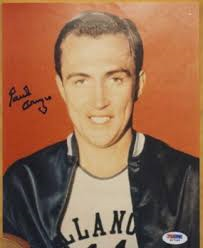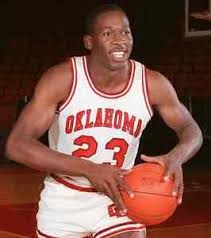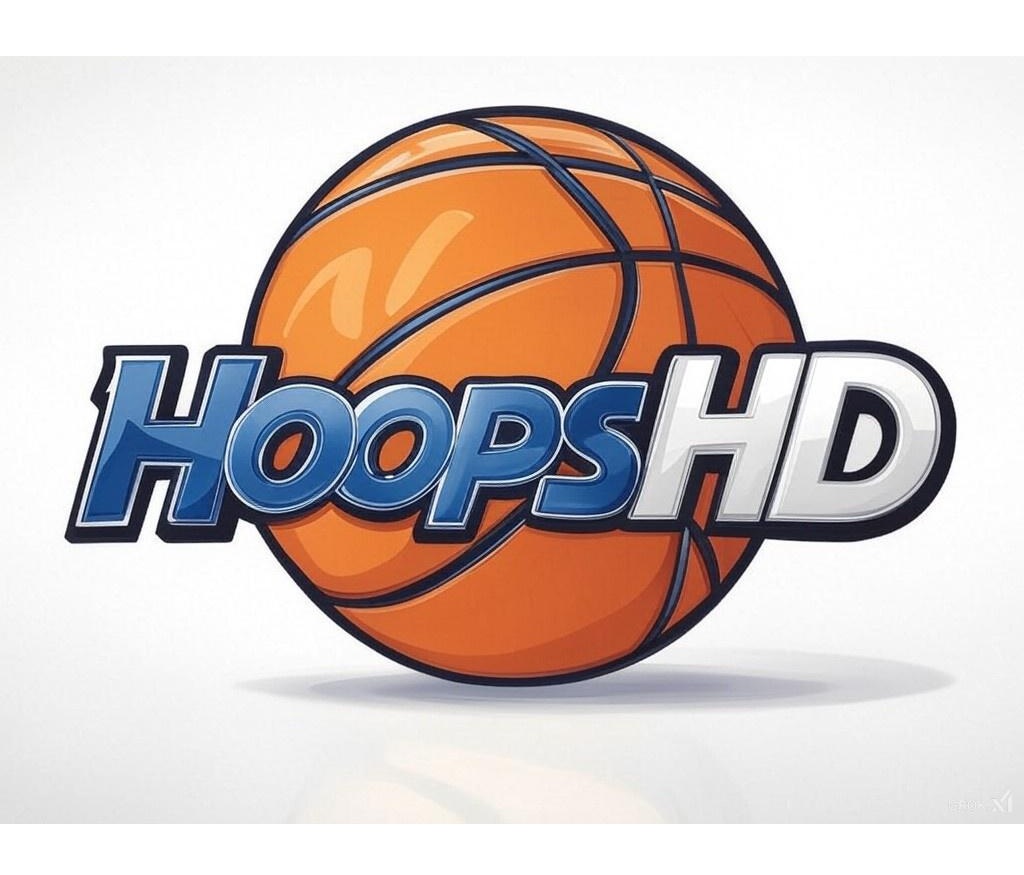Most teams who end up winning an NCAA title depend on their veteran leadership, but they also require fresh infusions of talent, which is why they try to bring in McDonald’s All-Americans. Villanova is no different: Coach Jay Wright already had SR PG Ryan Arcidiacano ready to lead the way this year, but he still recruited FR G Jalen Brunson to become a Wildcat and help them reach the Final 4 for the 1st time since 2009. Approximately 70 years ago the future phenom freshman on campus in the Main Line was Paul Arizin, although the only thing he could have gotten from McDonald’s was a Happy Meal due to the fact that he did not even play much high school basketball after trying/failing to stick with the team as a senior. As a junior he helped his team reach the Elite 8, and as a senior he was named national POY after leading the country with 25.3 PPG. He continued to dominate in the NBA: 17.2 PPG en route to being named NBA ROY, 2-time scoring champ in 1952 and 1957, the 1956 NBA title as a member of the Warriors, 10 All-Star Games, and induction into the Hall of Fame in 1978. Arizin passed away in 2006, but HoopsHD’s Jon Teitel got to chat with Arizin’s friend (and 1954 NCAA Final 4 hero) Frank Blatcher about his great jump shot and his legacy as 1 of the 50 greatest players in NBA history.
Arizin tried out for the basketball team at La Salle High School as a senior but only played a few games before being cut: why did it take him so long to develop into a great player? He told me that he was never that good in high school so he did not blame the coach. We started playing a lot of ball at “The Plaza” in South Philly after high school and he would regularly score over 25 PPG. The Villanova coach invited him to come to his college to play: Paul told him that he was already there but was just not on the team!
He later developed a jump shot while playing in local pickup games (which few players used at that time): why did he decide to incorporate that into his repertoire, and what made it so effective? He played the pivot during pickup games and you could simply not stop him once he got the ball with his back to the basket. He was just able to hang in the air forever.
In 1950 at Villanova he was named All-American/national POY after leading the nation with 25.3 PPG: what did it mean to him to win such outstanding individual honors? He was very proud of that because nobody worked harder on his game. I was proud of him as well even though I was in the Navy at the time. When I told my own teammates that we were buddies it really impressed them!
In 1952 in the 2nd-ever All-Star Game he scored 26 PTS in 32 minutes en route to leading his East team to a win and being named MVP: how was he able to play his best against the best? I got to play 1-on-1 with him over Christmas break that season. He had developed a 1-handed shot from the outside and made several in a row over me. It was just another arrow in his quiver that made him a complete player. He said that he liked to play against me because I gave him a tough time.
After leading the league in PPG/MPG/FG% for the Warriors in 1952, he missed the following 2 seasons due to joining the Marines during the Korean War: how did he feel about leaving the league, and what impact did the war have on him both on and off the court? He was a solid citizen. I was planning to attend Temple but Paul was the person who helped La Salle get in touch with me, which is how I ended up there.
In the 1956 Finals he scored 26 PTS in a 10-PT win over Ft. Wayne in the decisive Game 5 to clinch the title: what did it mean to him to win a title? He must have been ecstatic because it was the culmination of everything that he had wanted to do. The key ingredient on that team was Tom Gola, who I played with at La Salle.
In the 1960 Eastern Division Finals he scored 22 PTS in a 2-PT loss to Boston in the decisive Game 6 at home: was it frustrating for him to keep running into those legendary Celtics teams in the playoffs every year? I am sure that it was: the Celtics had a magnificent team.
On March 2, 1962 he scored 16 PTS as a teammate of Wilt Chamberlain during his famous 100-PT game in a win over the Knicks: how was he able to finish in double-figures with Wilt getting the ball a majority of the time? Paul probably got his points during the 1st half while it was a regular game because in the 2nd half the team just kept getting the ball to Wilt on every possession.
He chose to retire rather than move with the Warriors to San Francisco, and became a marketing representative for IBM: why was he so opposed to moving, and how did he like working in the real world? He was a regular guy who went to mass every day so he decided that it was better for him to stay in Philly and be near his family/friends.
He also played 3 seasons with the Camden Bullets of the Eastern Professional Basketball League, winning MVP in 1963 and winning the title in 1964: how was he able to be so dominant even after retiring from the NBA? He and I kept playing basketball for a long time after he retired. Had he gone to San Francisco he would have kept playing in the NBA for a couple of more years so Camden was perfect for him.
He was inducted into the Hall of Fame in 1978 and named 1 of the 50 Greatest Players in NBA History in 1996: when people look back on his career, how do you think that he should be remembered the most? He should be remembered 1st of all as a fantastic competitor: even in a pickup game he would run through a screen to try and block my shot! He was the originator who perfected the jump shot and could hang in the air even when the defense knew exactly what he was going to do. He was also a great team player. When the book came out about Wilt having 20,000 women, Wilt mentioned that Paul was a straight arrow both on and off the court. He always gave 110% and was a friend who changed my life by helping me go to La Salle.






Under The Radar Postseason News, Notes and Highlighted Games – Tuesday, March 29
The final week of the season is upon us, and last night marked the beginning of both the CBI best-of-3 Championship Series and the debut of the Vegas 16, albeit with only 8 teams. Tonight, the CIT championship game will be played at Columbia between the Lions and the UC-Irvine Anteaters, and the semfinals of the NIT will also be staged at Madison Square Garden.
NIT Semifinals
(1) VALPARAISO VS. (2) BYU (7:00 PM, ESPN) – Although the Crusaders are technically the only Under-The-Radar team to make it to Madison Square Garden, they are the highest-seeded team remaining in the NIT field. They got off to a slow start against St. Mary’s last week, but were able to cruise to a somewhat decisive 60-44 win over the Gaels. Their semifinal opponent will be BYU; the Cougars got to this stage by defeating Creighton at home by a final score of 88-82.
(2) SAN DIEGO STATE VS. (4) GEORGE WASHINGTON (9:30 PM, ESPN) – If Valpo is not the favorite to win the NIT, it will likely be San Diego State as the team to beat in the Garden. The Aztecs defeated Georgia Tech 72-56 at Viejas last week; like Valpo and BYU, this will be the first time in the NIT that the Aztecs will play a game away from home. GW beat Florida 82-77 to get to the semifinals, but the Smith Center felt like Florida North at times in that game. The Colonials also got a win away from home in the NIT against Monmouth, but San Diego State will also be a step up in competition from their last 2 games.
CIT Championship
UC-IRVINE AT COLUMBIA (7:00 PM, CBS Sports Network) – As confirmed by our own Chad Sherwood, Columbia is playing for the Ivy League’s first postseason title since 1975; Princeton defeated Holy Cross, South Carolina, Oregon and Providence to win the NIT Championship that season. Columbia advanced to the championship game by defeating NJIT 80-65; Irvine showed once more their road warrior status with an easy 66-47 win at Coastal Carolina on Sunday night as well.
CBI Championship Series
In Game 1, Morehead State held serve in the lone game to be played in Morehead, Kentucky. The Eagles were led by Lyonell Gaines’ 27 points and 14 rebounds; they defeated Nevada 86-83 in a game that featured 13 lead changes and 16 ties. Tyron Criswell had 31 points to lead Nevada, but the Wolf Pack now get to finish the rest of their season at home with Game 2 on Wednesday night and a potential Game 3 on Friday night should the Wolf Pack win on Wednesday.
Vegas 16 Semifinals
OLD DOMINION VS. UC-SANTA BARBARA (9:00 PM, CBS Sports Network) – In the opener yesterday, Old Dominion defeated Tennessee Tech 75-59 thanks to 3 players who scored in double-figures for the Monarchs – Trey Freeman (18 pts), Aaron Bacote (16 pts) and Zoran Talley (14 pts). They will take on the UC-Santa Barbara Gauchos; they defeated Northern Illinois 70-63 despite trailing for the first 14 minutes of the 2nd half. Maxwell Kupchak hit a layup with 5:55 remaining to give the Gauchos the lead for good; Gabe Vincent and Sam Beeler led UCSB with 20 and 16 points, respectively.
OAKLAND VS. EAST TENNESSEE STATE (11:30 PM, CBS Sports Network) – If you’re looking for star power in the Vegas 16, look no further than Oakland’s Kay Felder and East Tennessee’s Ge’Laun Gwyn. Oakland advanced to the semifinals thanks to an easy 90-72 win over Towson; Louisiana Tech hung around with East Tennessee for the entire game but were unable to get any closer than 1 point (a 60-59 deficit in the 2nd half). Gwyn iced the game with 3 free throws in the final 15 seconds as the Buccaneers won 88-83.
COACHING CAROUSEL – THE LATEST